 Starship Troopers Starship Troopers The American writer, Robert Heinlein, wrote a controversial military science fiction novel in 1959 entitled, Starship Troopers, in which a militaristic human society in the future is locked in a war with an alien species that are referred to as “arachnids” or “bugs”. The novel has been turned into an excellent 1997 movie with the same title featuring the actor Casper Van Dien. In the movie, after a particularly disastrous engagement during which the human forces suffers hundreds of thousands of casualties, a new commander is installed (Sky Marshal, Tehat Meru), and in her speech to the United Citizen Federation she summarizes her strategy in one sentence, “To fight the bug, we must understand the bug.” There is a lot of anxiety and fear about the coronavirus now, and the most common questions on everyone’s mind are along the lines of “fighting the bug”. For example: “how can I avoid getting it”, “how can we cure infected people”, or “how can we kill it”. These questions are understandable, but the answer to them can only derive from answers to more fundamental questions along the lines of “understanding the bug”, such as “What is the coronavirus?” or “How does the coronavirus work?” Only if we have the answers to these questions will we be able to “fight the bug”. Fortunately, unlike our fictitious human counterparts in Starship Troopers, we already know a great deal about viruses like the coronavirus and how they work, and this information allows us to “fight the bug”. First of all, what are viruses? Imagine something that is not alive, such as a rock, and something that is alive such as a bacterium. What separates life from non-life? A bacterium reacts to its environment, metabolizes nutrients, and reproduces, while a rock doesn’t. But between these two extremes, there is a shadowy realm populated by entities that retain only one crucial characteristic of living things: they reproduce or rather, they replicate. They either make copies of themselves or act as a template to induce changes in other entities to become like them. But to do this, they must gain access to living things. Viruses are denizens of this realm that exists between life and non-life which they share with other peculiar entities such as plasmids, transposons, and prions. However, unlike the bugs in Starship Troopers, viruses are not an alien entity. Over the course of millions of years in our evolutionary history, viruses infected our ancestors several times and the viral genetic information was incorporated into our own. Today about 8% of our genome bears homology to a class of viruses called retroviruses, and proteins with a viral origin have been coopted by our bodies to perform vital functions such as the development of the placenta. Now let’s move on to coronaviruses. There are several coronavirus strains that infect human beings, causing up to a third of upper respiratory tract infections. When infected people cough, the virus spreads in tiny droplets expelled from the mouth. This is a useful piece of information to “fight the bug” and the basis for doctors telling us to practice social distancing, avoid crowded places, cover our mouths when coughing, and isolate ourselves from others when we are sick so we will not infect them. Knowledge of the time it takes for the symptoms of a viral infection to set in, which is about 5-14 days, is also useful to “fight the bug” and is the basis for a quarantine period of 2 weeks for individuals suspected of having been exposed to the virus. The most serious and sometimes lethal coronavirus infections are those of the lower respiratory tract. These can induce severe inflammation (severe acute respiratory syndrome) of the lung structures involved in oxygenation of the blood impairing their function. This is compounded by the propensity of weakened lungs to have secondary infections, such as those by bacteria. Knowing this is vital to “fight the bug”. Secondary infections can be treated with antibiotics, but people with serious infections of the lung need help with breathing. This is why there is a need for ventilators. Although the current coronavirus is a new strain (SARS-CoV-2), coronaviruses are found both in animals and humans, and they have been intensively studied. The coronavirus is made up of a molecule that carries the genetic information to make more viruses (in this case an RNA molecule) surrounded by a coating of lipids (fats) and protein. Whereas the proteins are unique viral proteins, the lipids aren’t. The virus particles obtain these lipids from the membranes of the cells they infect when they bud off from them. The lipids are essential for maintaining viral structure and function. This is another useful piece of information to “fight the bug”. The lipids can be dissolved by soap, thus inactivating the virus. This is why doctors are telling you to wash your hands. People can become infected with the virus if they touch a contaminated surface and then touch their faces. And while the virus can remain active on surfaces for several days, a variety of disinfectants applied to surfaces can easily destroy the virus. 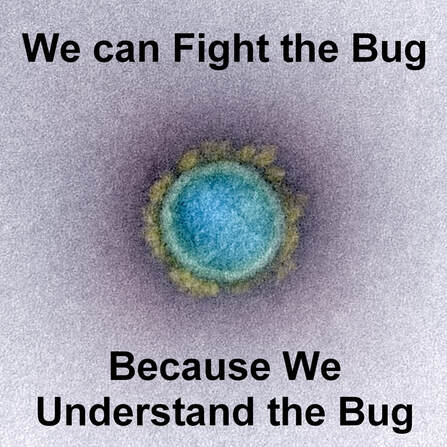 The genetic information of the coronavirus was sequenced and shared around the world early on in the infection. This is another key piece of information to “fight the bug”, as it is used to make tests. Tests allow us to identify who is sick with the disease, isolate that person, and contact all the people with whom they have interacted and check the places they have been. The genetic information can also be used to make vaccines. There are currently 41 research groups and pharmaceutical companies around the world making experimental vaccines against the virus. While a vaccine will not be a short-term solution, it will prevent a situation where recurring waves of the virus return over the years to infect our societies. An approach that can yield results in the short term involves isolating the antibody rich serum from the bodies of people who have recovered from the virus, and administering that to people still fighting the virus. Finally, knowledge of viral biology is being exploited to come up with therapeutic strategies against the virus, and several possible drugs are being evaluated for activity. The coronavirus pandemic is a serious threat, but as I have written before, thanks to science, we are not as helpless as we were in the past. If Sky Marshal, Tehat Meru, were in charge of dealing with the coronavirus pandemic in our world today, she would probably say that indeed, “We can fight the bug, because we understand the bug.” The photograph by Hadley Paul Garland of the Starship Troopers novel is used here under an Attribution-ShareAlike 2.0 Generic (CC BY-SA 2.0) license. The transmission electron micrograph of a SARS-CoV-2 virus particle (that produces the disease COVID 19) isolated from a patient, was captured and color-enhanced at the National Institute of Allergy and Infectious Diseases (NIAID) Integrated Research Facility (IRF) in Fort Detrick, Maryland, and is used here with modification under an Attribution 2.0 Generic (CC BY 2.0) license.
0 Comments
3/21/2020 How Bad Is the Coronavirus? Aren’t We Overreacting? Is It a Conspiracy? Please Listen to the Scientists!Read NowThere is considerable anxiety regarding the current coronavirus (COVID-19) pandemic. One of the great unknowns is how bad it will be. The worldwide fatality rate for the virus is 4%. Some people say that the total number of cases is being underestimated which inflates death rates. They claim that the COVID-19 pandemic fatality rate will be no worse than that of the seasonal flu (around 0.09%). Therefore it is unnecessary to cancel travel and sporting events, close businesses, or suspend work. Is the response to COVID-19 overblown? Are scientists irresponsibly hyping the disease for the media and the government with ulterior motives? As would be expected from what I explained before in a previous post, there are already several conspiracy theories circulating regarding the virus. As of now, the vast majority of Americans do not know personally any individuals who have contracted COVID-19 or died from the disease. As far as these people are concerned, life seemed to be going on pretty much the same as it always had until the government stepped in and started curtailing their freedom. All they have to go on is what they see and read in the news and science websites. Therefore, they have to accept that what they are being told is true, and they have to trust those who are telling it to them. The problem is that for years these very same people have been told that that scientists are dishonest and have a hidden agenda, that news organizations are biased and peddle fake news, and that the government is not to be trusted. Many of these people have wholeheartedly embraced conspiracy theories. How can individuals who believe, for example, that global warming is a hoax or that vaccines are harmful and unnecessary trust scientists, the news media, or government to relay to them the facts regarding COVID-19? In this post, I will try to do my best to get some points across. 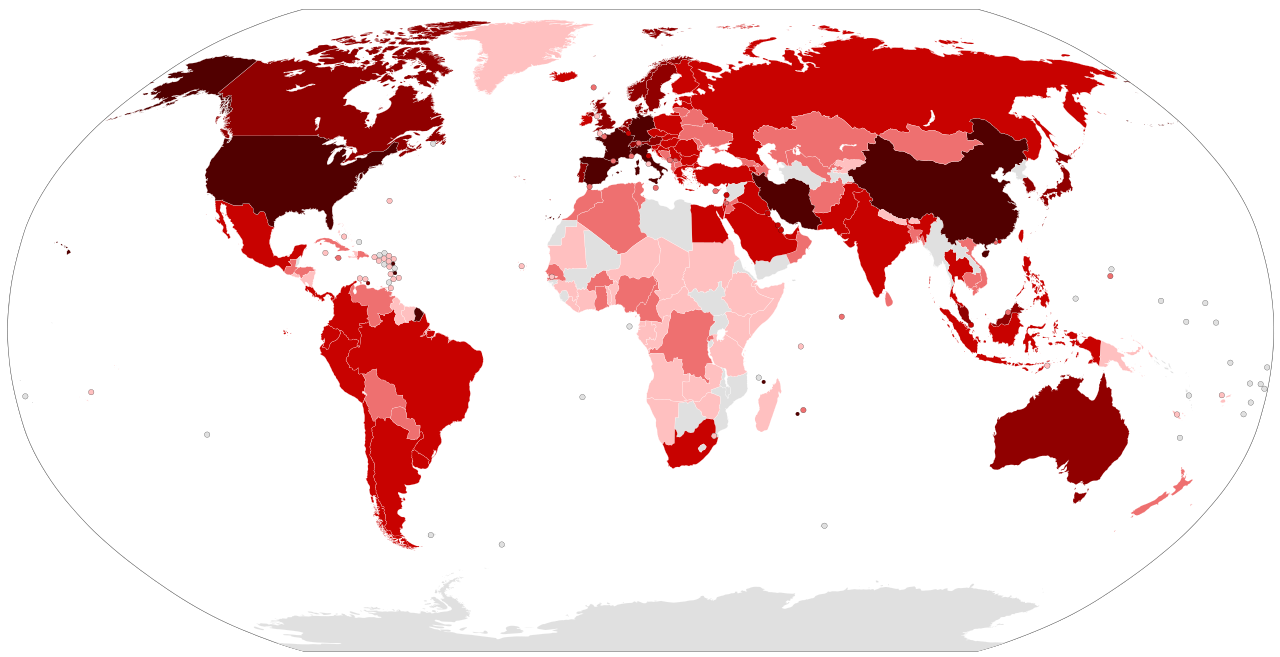 Worldwide Spread of the Coronavirus Worldwide Spread of the Coronavirus As I write this, the worldwide death rate due to COVID-19 is 4% ranging from as high as 8% in Italy to 0.2% in Germany (1.3 % in the United States), and the number of cases is increasing exponentially in some countries. This large variation may be due to many factors such as the makeup of the population and their social characteristics, the quality of healthcare in the country, how early the country responded to the virus, etc. The country that has performed the most tests compared to their total population is South Korea. Although testing has some problems of its own that can result in underestimation of the real number of cases, is likely that South Korea’s numbers regarding the total number of cases of COVID-19 is closer to the real number of total cases. The death rate from the virus in South Korea is 1%, so this lower death rate is probably closer to the “real” death rate of COVID-19. But this figure is still 10 times higher than that for the seasonal flu. It is estimated that the current seasonal flu has infected an average of 46 million American producing 41,000 deaths. If COVID-19, were to infect 46 million Americans, it could produce 460,000 deaths, which is greater than the number of Americans who died during World War II. It must also be stressed that COVID-19 is a new virus. This means that, unlike the seasonal flu, there is no immunity against it in human populations. Also, the ability of the COVID-19 virus to spread in a population seems to be as high as, or even higher than that of the seasonal flu. One final aspect of the disease is hospitalizations and intensive care. In China 15% of the people afflicted with the virus required hospitalization and 5% ended up in intensive care. In Italy the numbers are much grimmer, 50% required hospitalization and 10% ended up in intensive care. By comparison people infected with the flu in the United States have a rate of hospitalization of less than 1.2%. Even if COVID-19 in the United States results in 10% of patients being hospitalized, this level of hospitalizations has the potential to overwhelm the health care system. While older people with preexisting conditions seem to be at higher risk of hospitalizations, so far in the United States 38% of those sick enough to be hospitalized are younger than 55, so that is also a cause of concern. Do you see now why scientists are spooked and are advising the media and the government to report and proceed accordingly? And this is not just scientists in the United States. Scientists from every country in the world are sounding the alarm. These are individuals who have different religious and philosophical beliefs, different political opinions, and come from various ethnic and social backgrounds, but they are all saying the same thing. How can this be a conspiracy? It is true that there are unknowns. It is true that the real effect of the virus may turn out to be milder than expected, but do we want to risk it? Some people complain that in the last pandemic that affected the United States, the Swine flu of 2009, apart from some school closings, no further drastic measures were taken. It must be understood that drastic measures to curtail the spread of a virus will harm the economy and may even cause a recession. Recessions lead to layoffs, they stress individuals and families, and they affect the physical and mental health of the population. Recessions kill and harm individuals and have long lasting consequences. Therefore, drastic measures to curtail the spread of a virus may harm the economy and should not be taken lightly. Early on in the Swine Flu pandemic scientists obtained data that indicated that the virus would not be as bad as it seemed to be initially and recommended against drastic measures to curtail the spread of the virus. The recommendation turned out to be accurate. The Swine Flu resulted in the hospitalization of 0.45% of those affected producing a 0.02% mortality. This mortality still represented 12,500 deaths, but was substantially below those of the seasonal flu. Scientists tell us that we should be concerned about COVID-19 and that we should modify our behavior to protect ourselves and others. They do so based on the best available data, and they inform the news media and advise the government accordingly. What these scientists do is not different from what other scientists are doing raising the alarm about global warming and telling us that vaccines do not cause autism and explaining how important they are in protecting us from disease. Please listen to the scientists! The image of the worldwide spread of COVID-19 from the Wikipedia Commons is used here under an Attribution-ShareAlike 4.0 International (CC BY-SA 4.0) license. We are now in the midst of pandemic of a coronavirus disease called COVID-19 caused by a virus called “severe acute respiratory syndrome coronavirus 2” (SARS-CoV-2), and there is some anxiety regarding certain unknown aspects of this virus. For example, the death rates appear significantly higher than those of the regular flu (note however that COVID-19 is not a flu or even related to the flu), but there is uncertainty as to whether this is due to an underreporting of milder non-lethal cases. However, the majority of deaths seem to occur among older weak people with previous health problems, and infected people that do not yet have symptoms upon viral infection do not seem to be a major driver behind the spread of the virus. Will COVID-19 turn out to be a disease no more serious than the flu, or will it be much worse? In a previous post I quoted the late horror writer, H. P. Lovecraft, who wrote that “The oldest and strongest emotion of mankind is fear, and the oldest and strongest kind of fear is fear of the unknown.” But even as we remain somewhat fearful about what we don’t know regarding COVID-19, we must remember not only what we do know about diseases today and the fact that we have the tools fight them, but also how little we knew about them in the past and how helpless we were. Let’s start with the Black Death. The Bubonic Plague or Black Death ravaged many areas of the world in antiquity. The disease is caused by a bacillus, Yersinia pestis, which infects rats (although other animal hosts are also common) and is then transmitted to humans by fleas that bite infected rats. The most famous outbreak of the plague was that which occurred in Europe from 1347 to 1351 and which wiped out an estimated two thirds of the continent’s population (about 50 million people). Poor public hygiene and crowded living conditions in Europe created an excellent environment for the spread of disease. The role of germs or insects in the causation of disease was unknown, and physicians were helpless against the onslaught of the disease which was blamed on several things ranging from foul air and unfavorable planetary alignments to divine punishment for sins. Today it is difficult to comprehend the sheer level of terror triggered by the plague in Europe and the breakdown of society and institutions that it caused. Corpses accumulated in the streets. Family members abandoned their dead and dying. Government officials, doctors, and priests deserted their posts. In some cities up to 80% of the population was wiped out. Some rulers instituted draconian measures like boarding up houses with all the occupants inside if one person in the house was infected, thus condemning all those inside to die. Ignorance, superstition, and fear combined to trigger barbaric behavior in mobs of people that targeted and killed individuals or certain groups of people like gypsies or Jews who were rumored to be behind the causation of the plague. Several plague pandemics ravaged Europe over hundreds of years causing the death of millions. It was only in 1894 that the Swiss-French physician, Alexandre Yersin, discovered the plague bacillus and the role of rodents in its spread, and in 1898 the French physician Paul-Louis Simond discovered the role of fleas in the transmission process. This allowed the implementation of effective public hygiene measures that finally controlled the disease. Now let’s move on to the so called Spanish Flu. From 1918 to 1919 an influenza pandemic called the Spanish Flu killed 50 million people in the world and 500,000 in the United States. Due to World War I, any news about the flu that could be used as propaganda by the enemy was censored in many countries including the US, but the general public could tell that something out of the ordinary was going on. Unlike previous flu infections, this strain of influenza mostly affected and killed people in the prime of their life (20 - 40 years old), and it quickly overwhelmed the health care system in many localities which had to resort to interring the dead in mass graves. There was no way to treat influenza or the deadly secondary infections it generated, so fighting the disease consisted on mostly preventive measures such as good hygiene, quarantine, closing venues where large numbers of people congregated, and supportive care for those infected. The fear of the times of the plague returned. Scores of people locked themselves in their houses, refused to help their neighbors, and refused to go to work emptying the streets of some cities and towns. The causative agent of the flu was originally believed to be a very small bacterium, but the development of the field of virology eventually led to the understanding that the flu is caused by viruses. With the invention of the electron microscope in the 1930s, viruses like the ones that cause the flu could be visualized. In 1999 the Spanish Flu virus was recovered from people who died during the pandemic. The virus was reconstructed in 2005 and studied to figure out what made it so virulent. So how do the last two pandemics compare to the COVID-19 pandemic today? 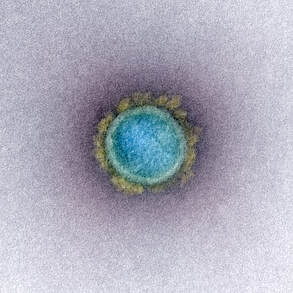 SARS-CoV-2 virus particle which produces the disease COVID 19 SARS-CoV-2 virus particle which produces the disease COVID 19 Unlike what happened with the Black Death or the Spanish Flu, we know exactly what COVID-19 is. We know what the virus looks like, and what it does and how it does it. We have a good idea of where it originated and how. We have sequenced its genome in record time, and used that information to make test kits that permit the identification of those people that are infected, so they can be quarantined and questioned about their contacts and the places they have been. We have antibiotics to treat secondary infections triggered by the virus. We are testing antivirals that may be of use against the virus, and we have also begun to develop vaccines. There is a vast worldwide network of organizations such as the Global Virus Network and the World Health Organization that are tracking the spread of COVID-19 and coordinating the sharing of information among experts in different disciplines at every level and informing the public. There are government agencies such as the Centers for Disease Control and Prevention (CDC) in the U.S. that are monitoring the individual cases in a given country, coordinating the public health response, and advising the government and the general population. Humanity’s knowledge of disease and its response to it has come a long way since the times of the Black Death and the Spanish Flu. We will continue fearing the unknown, but thanks to science this “unknown” has been made much smaller. Today we fear less. The painting of Marseille during the Great Plague by Michel Serre is in the public domain. The photograph of an emergency hospital during influenza epidemic in Camp Funston, Kansas, circa 1918 is from the National Museum of Health and Medicine, and is used here under an Attribution 2.0 Generic (CC BY 2.0) license. The transmission electron micrograph of a SARS-CoV-2 virus particle (that produces the disease COVID-19), isolated from a patient, was captured and color-enhanced at the National Institute of Allergy and Infectious Diseases (NIAID) Integrated Research Facility (IRF) in Fort Detrick, Maryland, and is used here under an Attribution 2.0 Generic (CC BY 2.0) license. 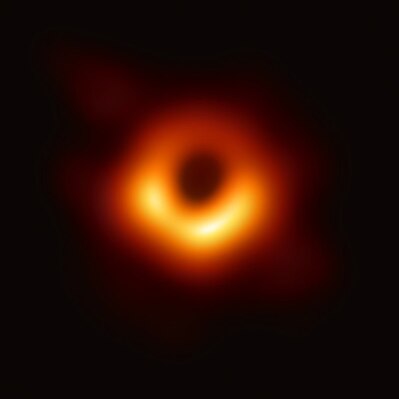 Image of the Black Hole of the Galaxy M87 Image of the Black Hole of the Galaxy M87 In the last decade, scientists made amazing discoveries. For example, scientists managed to photograph a black hole, which is the remnant of a star that has collapsed upon itself (a supernova) creating a region of space with such a strong gravitational field that even light can’t get out. Scientists also managed to detect gravitational waves, which are the ripples that form in the fabric of spacetime when cataclysmic events happen such as the collision of two black holes. Another discovery was the finding of the Higgs Boson, a subatomic particle associated with a proposed universal quantum field that interacts with other particles generating their masses. Finally, space probes sent to the planets made exciting discoveries regarding these worlds such as the way Saturn’s rings are formed (Cassini Spacecraft), the presence of water in Mars in the past (Curiosity Rover) and present (Mars Express spacecraft), or the surprising geological activity found in Pluto (New Horizons Probe). These are exciting discoveries that stimulate our imagination and sense of wonder and advance the frontiers of our knowledge of the universe. But wait a minute. How do you know these things are true? What if these scientists are lying? What if they are faking data and misleading the public? Why would they do this? Well, they could be doing this to keep getting their grants approved by funding agencies, or they may have sold out to the companies that make their multimillion-dollar equipment. How do you know this is not happening? Are you an expert in astronomy, space crafts, or physics? How do you know if the data are true? How do you know these individuals are not hiding their dishonesty behind a wall of technical mumbo jumbo and made up findings? How do you know there is not a conspiracy of dishonest astronomers, spacecraft experts, and physicists to mislead taxpayers and take their money? You would probably reply that you believe that the majority of the individuals involved in these studies are persons like you or me who strive to be honest and are genuinely interested in figuring out the truth about things. You would also expect scientists with competing views to double-check the experiments and observations of each other. Additionally, you would expect funding agencies to have mechanisms in place for reviewing the granting of funds, the results of studies, and the claims by any whistleblower regarding the mismanagement of funds or faking of any data. Finally, you would hope that any of a number of government and agency watchdog groups would notice if something strange was going on. And yes, all of the above are indeed the case. We acknowledge that there will be some dishonest individual or groups of individuals that will abuse the system, but we expect all the above safeguards will work to eventually weed them out. We also rely on these safeguards to rule out the existence of any Machiavellian conspiracy. But in any case, truth be told, if you are an average person, all the questions I asked and all the notions I put forward above are probably nothing more to you than a theoretical mental exercise. For you, things like black holes, gravitational waves, subatomic particles, and planets may be interesting, but they are not something that really concerns you that much or affects your everyday life. But here is my point. 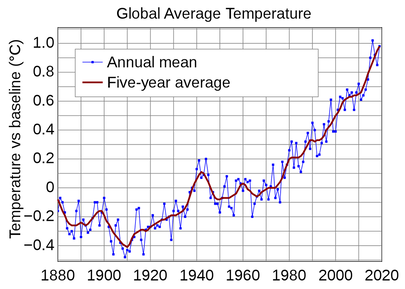 Global Warming Global Warming There are thousands of scientists who, much like the astronomers, spacecraft experts, and physicists alluded to above, are also finding out some amazing things in other fields of science. Climate scientists are finding that the Earth is warming due to human activities, and that unless we reduce our consumption of fossil fuels and implement green technologies, we are going to do great damage to our planet. Vaccine scientists are coming up with new vaccines against terrible diseases, and alerting us about the dangers of not vaccinating our children. Evolution scientists are applying the tenets of evolution to come up with useful applications that benefit our society, and warning us about the dangers of the scientific illiteracy that would be created if creationism were to be accepted and taught in schools. However, unlike things in space or in the realm of subatomic particles, climate change, vaccines, and evolution affect people directly. They are told they HAVE to use less fossil fuels and more green technologies. They are told they HAVE to vaccinate their children. Their children ARE taught in school that something that goes against their faith is true.
And what a difference this makes to some people! All those scientists who were “persons like you or me who strive to be honest and are genuinely interested in figuring out the truth about things” are now deluded, evil liars and cheats, or atheists. All those safeguards that supposedly keep science and scientists true and honest have failed in these fields, and all the science in the climate, vaccine, and evolution disciplines has become part of nefarious conspiracies to fake or misrepresent data, get money, cause harm, take away our liberties, destroy religion, or spread socialism! However, astronomers, space craft experts, and physicists are not different from climate, vaccine, and evolution scientists in that they all follow the scientific method to find the truth about the behavior of matter and energy in their fields of expertise. These people uncover the way our world and the universe works, and then they report it. All scientists do this. Why demonize and delegitimize some and not others? The answer is, as mentioned above, because what some scientists find in some fields challenges our behavior or our beliefs. This is one of the things about science that some people cannot deal with. Science is not just about generating pretty pictures and interesting experiments for show. The purpose of science is to discover reality. And in doing so, science may reveal that what you are doing is harmful to yourself, society, or nature. Science may also reveal that some of your most deeply held beliefs and convictions are not true. While many people welcome these discoveries and change their behavior or beliefs, others have a lot of problems in dealing with this and will understandably lash out at science and scientists. But that’s the way science works. Reality cannot be compromised. The Image of the Black Hole of the Galaxy M87 by the Event Horizon Telescope is free for public use. The Global Average Temperature graph by NASA is in the public domain. |
Details
Categories
All
Archives
June 2024
|

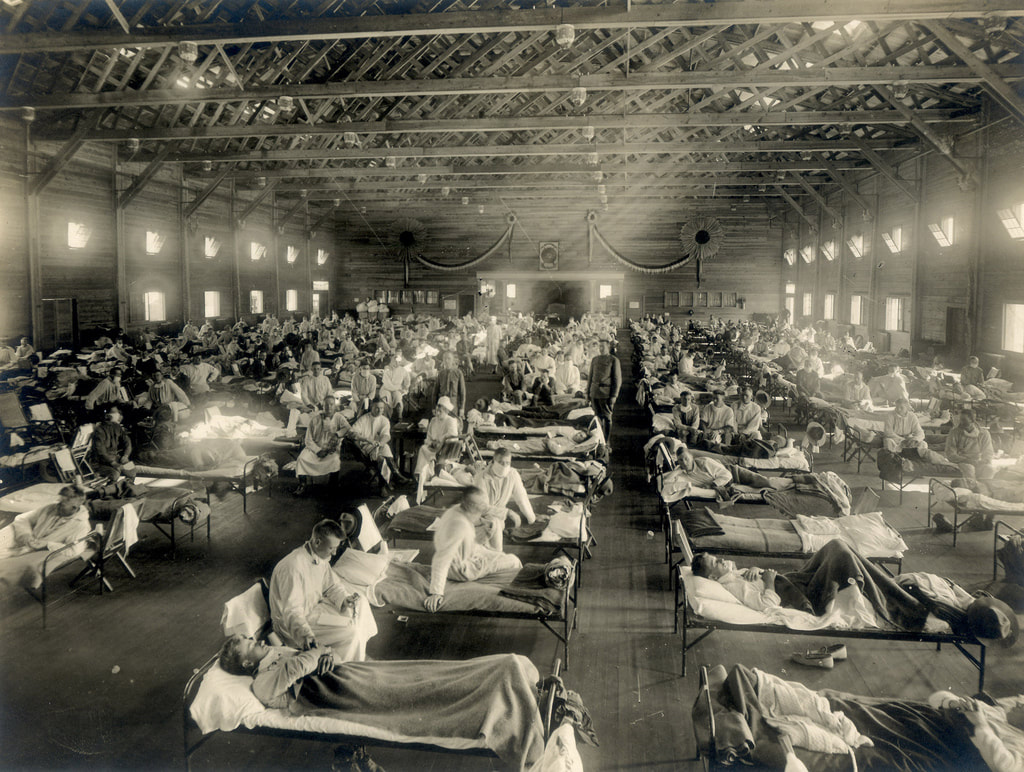
 RSS Feed
RSS Feed